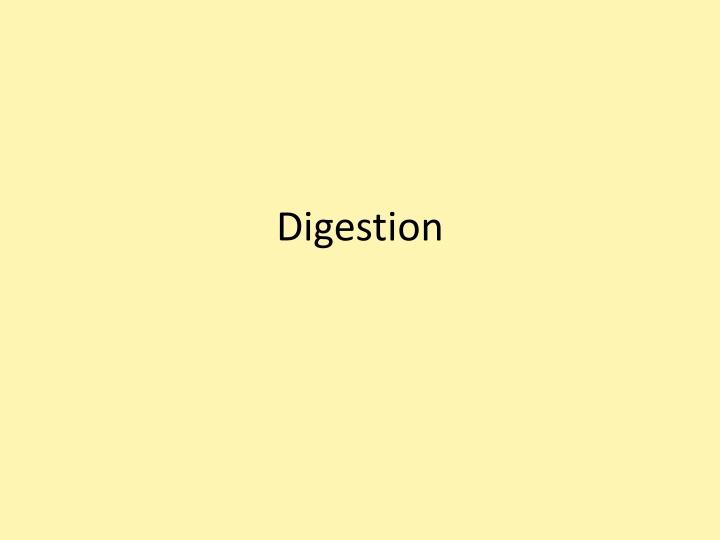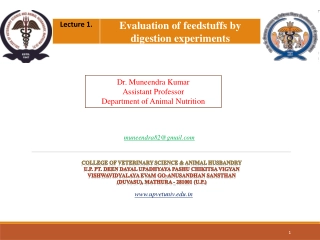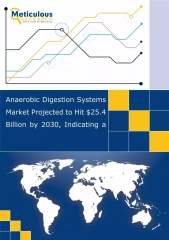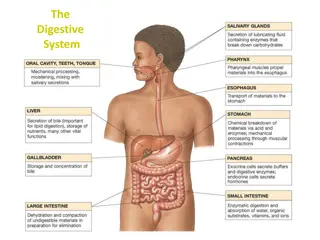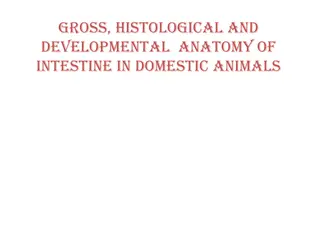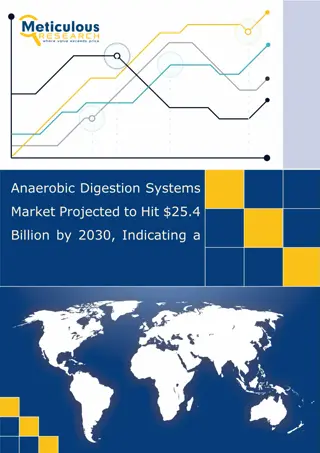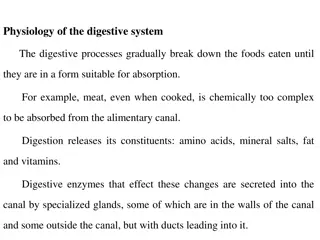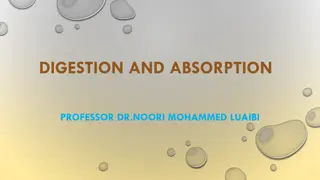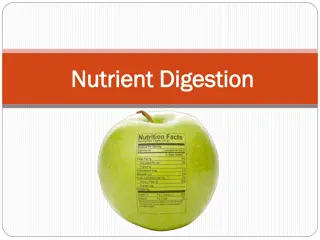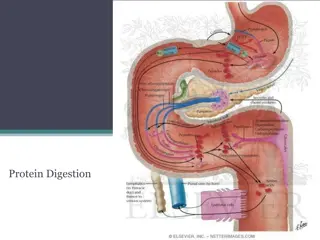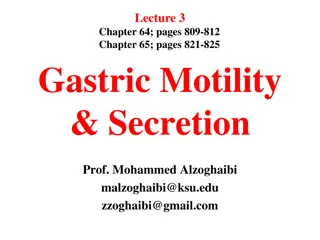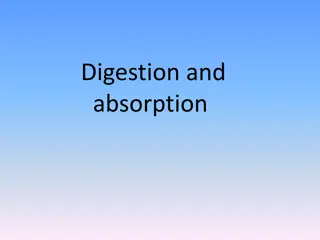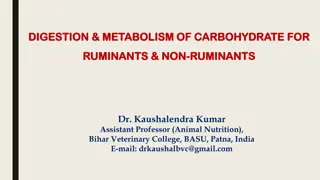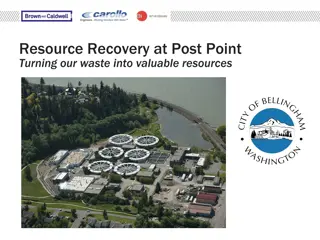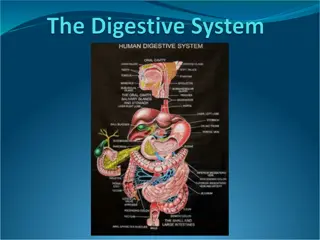Digestion
Digestion is the process of breaking down food into absorbable units, involving key organs like the stomach and intestines. It includes organs like the liver, gallbladder, and pancreas, along with activities like peristalsis and enzyme actions. Nutrient absorption through microvilli and transport via blood and lymph are vital aspects of digestion.
Download Presentation

Please find below an Image/Link to download the presentation.
The content on the website is provided AS IS for your information and personal use only. It may not be sold, licensed, or shared on other websites without obtaining consent from the author.If you encounter any issues during the download, it is possible that the publisher has removed the file from their server.
You are allowed to download the files provided on this website for personal or commercial use, subject to the condition that they are used lawfully. All files are the property of their respective owners.
The content on the website is provided AS IS for your information and personal use only. It may not be sold, licensed, or shared on other websites without obtaining consent from the author.
E N D
Presentation Transcript
Digestion the process by which food is broken down into absorbable units
The key organs of the gastrointestinal (GI) tract are the stomach and the intestines.
This includes: Mouth Pharynx Salivary glands Trachea Esophagus Sphincters Stomach
Liver Gallbladders Bile duct Small intestine Large intestine Pancreas Rectum Anus
Peristalsis wavelike muscular contractions of the GI tract that push its contents along Digestive enzymes proteins found in digestive juices that act on food substances, causing them to breakdown into simpler compounds Hydrochloric acid found in stomach
Bile emulsifies fat; made by liver and stored in gallbladder Absorption the uptake of nutrients by the cells of the small intestine for transport into either blood or lymph
Microvilli tiny projects on each villi in the small intestine that trap nutrient particles and transport them into cells Crypts tubular glands that lie between intestinal villi and secrete intestinal juices into the small intestine
Nutrients are transported via blood and lymph. Nutrients leaving the digestive system via the blood are routed directly to the liver before being transported to the body s cells; those leaving via lymph eventually enter the vascular system but by-pass the liver at first.
